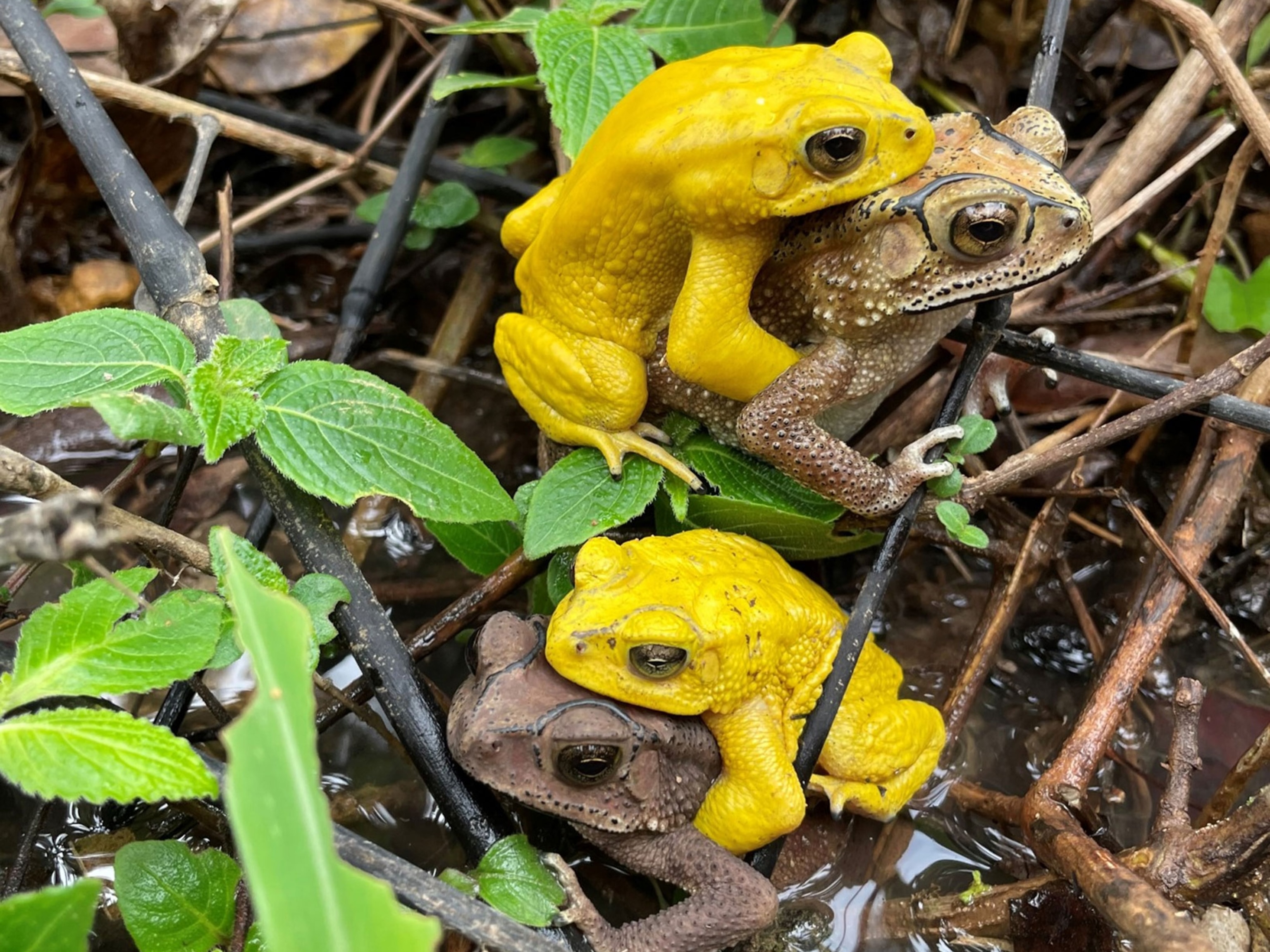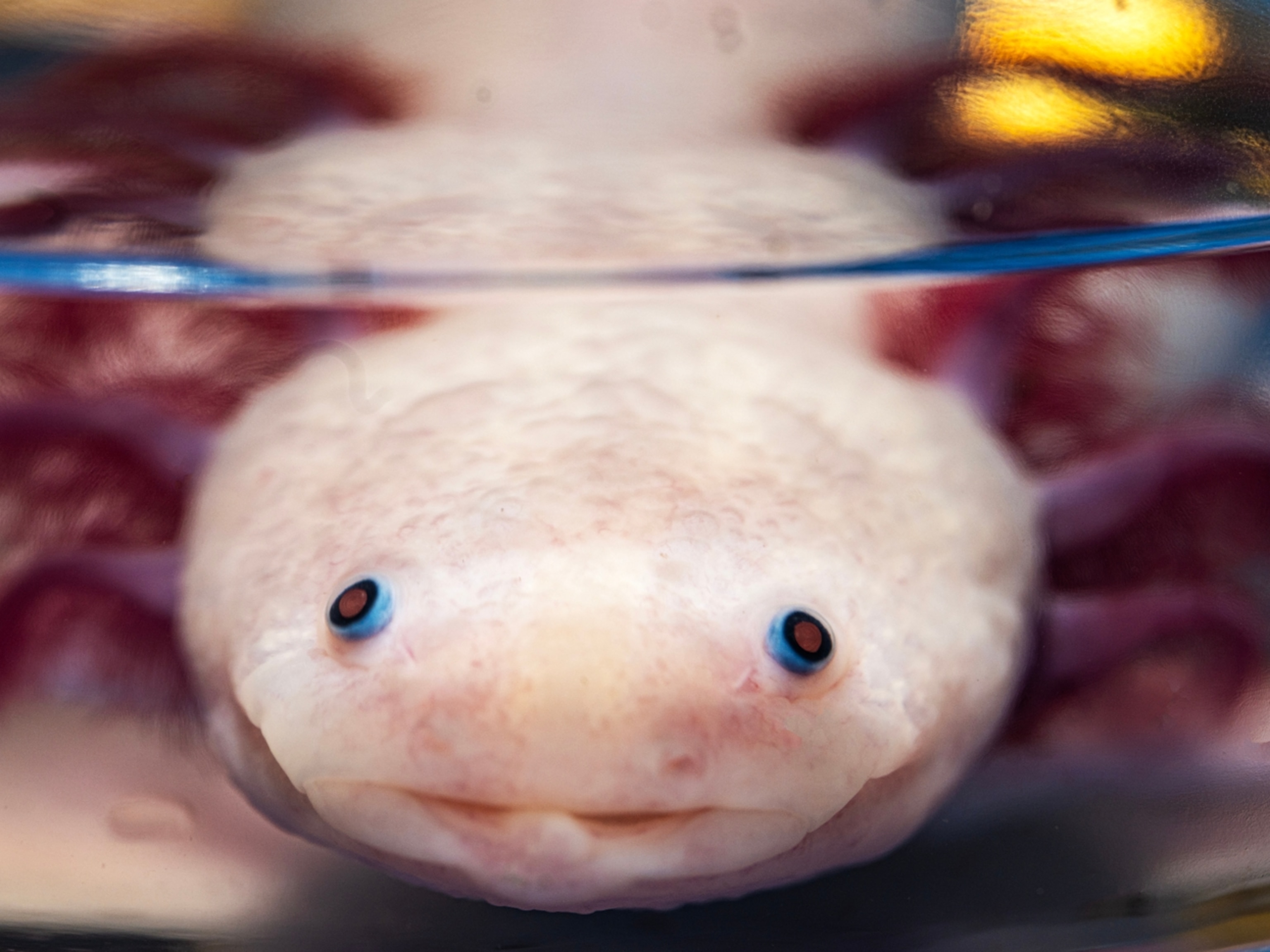This Giant Salamander Isn't 200 Years Old, But It's Still Super Rare
The biggest amphibian on Earth is critically endangered due to habitat loss and demand as a delicacy.
If you’re ever wading through a river in China and step on something squishy, take care—you might be standing on Andrias davidianus, the largest amphibian on Earth.
This is exactly what Chinese media sources say happened last week when a fisherman discovered a Chinese giant salamander in a cave outside the city of Chongqing (map).
The gentle giant weighs 114 pounds (53 kilograms) and stretches over 4.5 feet (1.4 meters) long, according to the Chinese state-run publication People's Daily Online.
Believing the salamander to be ill, the fisherman contacted the authorities, which captured the animal and transferred it to a facility for “protection and further study.” (See "4-Foot Salamander Arrives in London as Face of New Conservation Effort.")
While some subsequent news reports cite anonymous experts claiming the animal may be more than two centuries old, these estimates are at odds with what scientists know about the species.
“It is a big salamander, and they grow slowly,” says Theodore Papenfuss, a herpetologist and researcher at the University of California, Berkeley, “but the oldest I’ve heard of is 50 years, and that was in captivity.”
“I think 200 years is a big stretch.”
A Rare Find
Even if the animal likely hasn't been around since the Battle of Waterloo, it’s still an extremely rare find.
The Chinese giant salamander, which has declined in number by 80 percent in recent decades, is considered critically endangered by the International Union for the Conservation of Nature (IUCN). Its exact numbers are unknown.
The species is closely related to two other behemoths—the slightly smaller Japanese giant salamander and the hellbender of eastern North America. The IUCN considers both of those species near threatened. (See "U.S. Giant Salamanders Slipping Away: Inside the Fight to Save the Hellbender.")

“One of the main problems facing salamanders in China is that as fast as they’re caught, they are either going into breeding farms or they’re being eaten,” says Papenfuss.
Some people in China have even begun farming the salamanders by the thousands to meet demand. While farming could potentially help wild salamanders by supplying the industry with farm-raised animals, a study published earlier this year also warned it could threaten wild individuals by incubating and spreading disease. (Read "Rare Giant Salamanders Bred in Captivity.")
Despite their rarity, finding a Chinese giant salamander in the wild isn’t entirely unheard of, adds Todd Pierson, a herpetologist at the University of Georgia and a National Geographic explorer.
“There are certainly still Andrias davidianus in the wild, and many of those that turn up, like this one, seem to be from caves,” he says.
Because the amphibians are so intensely harvested, Papenfuss says, it might be that caves are their last refuges.





